Shipwreck Bible, soldier's Bible, first New Testament in Maori, and more…
Bibles mean different things to different people. For some they are volumes that sit on a bookshelf, revered, but never referred to; for others they are so heavily used that they are now very fragile. Bibles have been in all kinds of situations: and in this blog they have also survived shipwrecks and the theatres of the First World War.
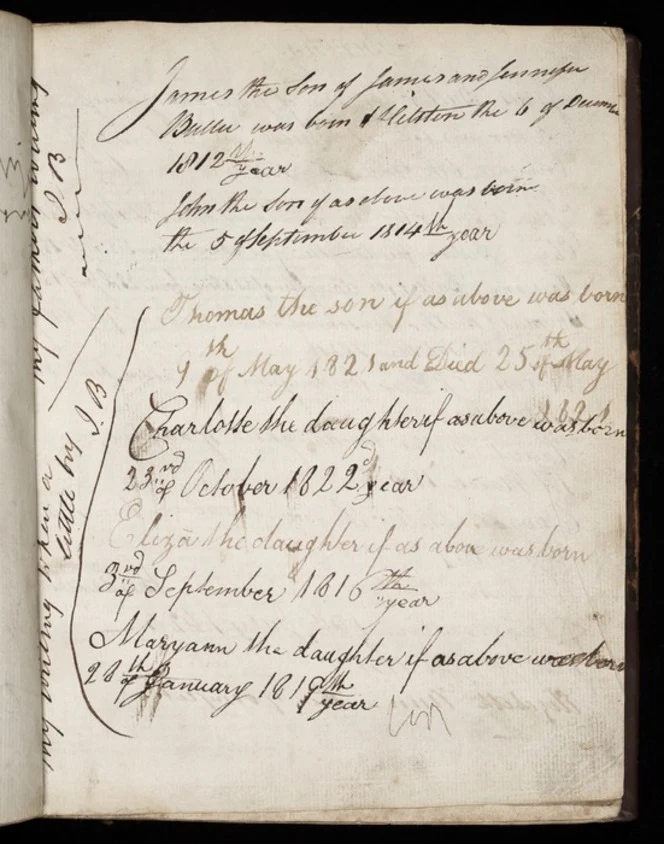
Buller Family Bible. Ref: REng BIBLE 1599
Early settler families often brought Bibles with them. These were used for recording important family events such as births, marriages, and deaths. The volume above, with imprint date of 1599, lists the family of James and Jennifer Buller of Helston, Cornwall, England. It probably came to New Zealand with their eldest son, Rev. James Buller (1812-1884), who arrived in New Zealand in April 1836 to serve as a missionary at Mangungu in the Hokianga.
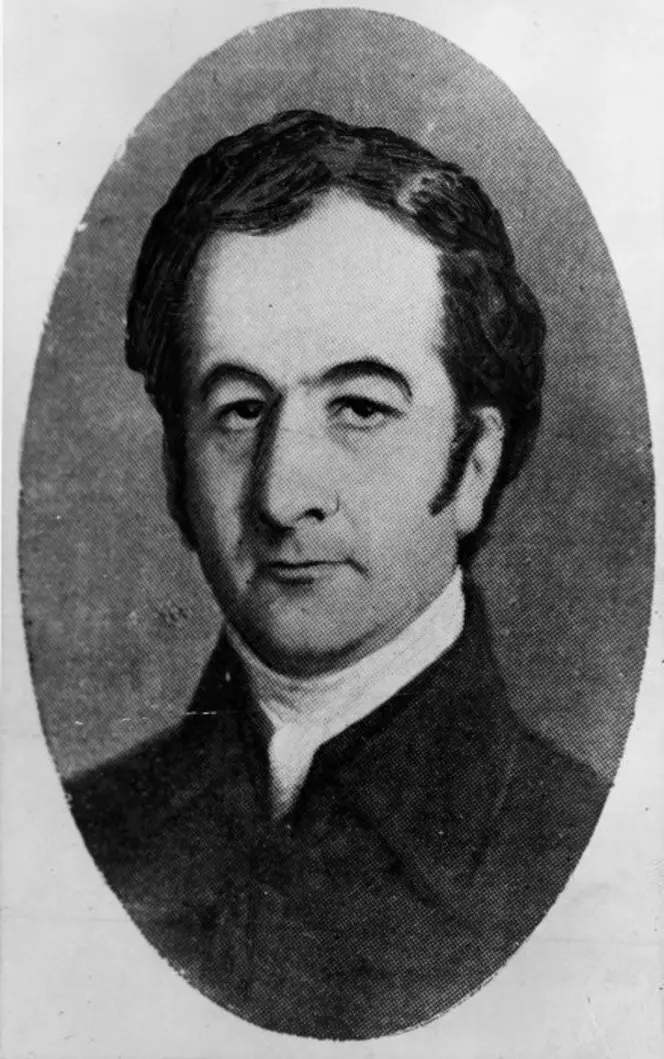
Rev. James Buller. c.1855. Ref: PAColl-5482-049
By 1838 he was running the Wesleyan Mission at Tangiteroria in the Kaipara, and while there the notorious sandbars of the Kaipara Harbour claimed yet another victim; the brig ‘Sophia Pate’. The only surviving passenger was a young boy, John Wilkinson, who came ashore with a Bible.
The Wilkinson family from Cork, Ireland, along with several other families, had chartered the Sophia Pate to ferry them and their belongings from Auckland to Kaipara en route to the Kaihu Valley where they planned to settle. They would never arrive. Ten-year-old John Wilkinson had earlier lost his mother at Sydney on the voyage out, and the rest of his family; his father, younger brother Michael and sisters Mary and Susannah would all drown with the wreck of the Sophia Pate on 31 August 1841. James Buller records the event on a flyleaf of the Wilkinson Bible (pictured below) and he ends: ‘From which calamitous shipwreck the owner of this book together with the book itself was rescued – the only representation of the passengers then on board – whence he was taken under the fostering care of the writer James Buller’. The Bible was donated to the Alexander Turnbull Library by descendants of the Wilkinson family.
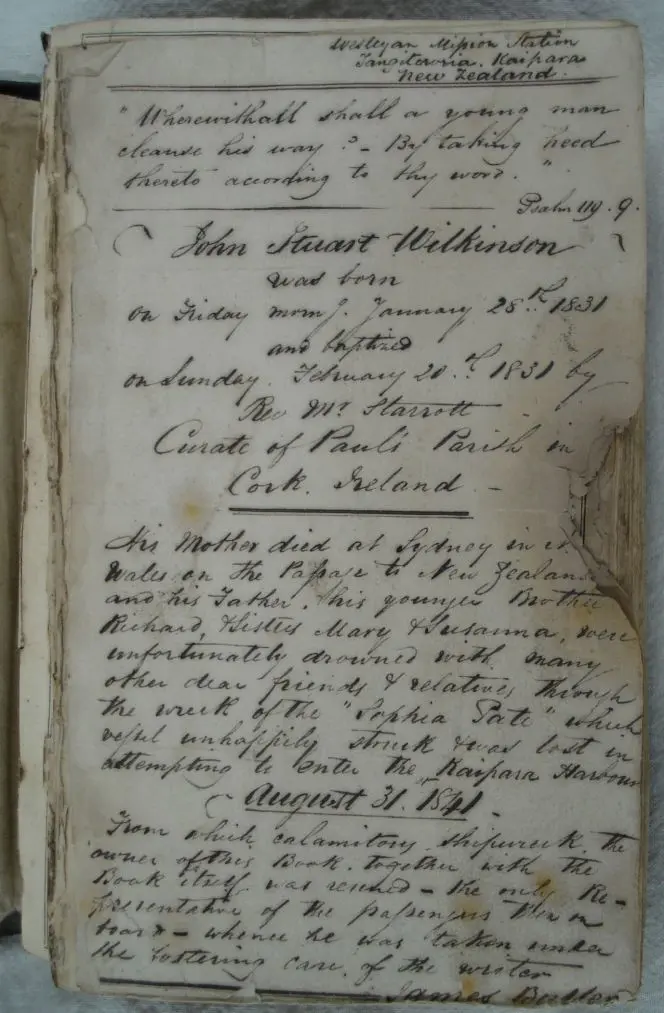
Bible which survived the shipwreck of the ‘Sophia Pate’ in 1841. Ref:220 P Bib
Printing Bibles in large quantities in early colonial New Zealand, especially the Bible translated into Maori, was a problem. This changed when the Church Missionary Society contracted William Colenso (1811-1899) to set up a printing press here. He arrived in the Bay of Islands on 30 December 1834; the printing press following in January 1835. The press caused great interest among the Maori, and Colenso found that ‘the type had to be carefully watched lest the warriors made off with it for melting down into bullets’. Colenso wasted no time in getting started and in February 1835, 2,000 copies of a Maori translation of St Paul’s Epistles to the Ephesians and Philippians rolled off the press.
The first complete New Testament in Maori was printed in an edition of 5,000 copies in December 1837, and issued after binding in January 1838. The proof copy, with corrections in the hand of the translator, William Williams (1800-1878), can be viewed in the exhibition ‘To the ends of the earth’.
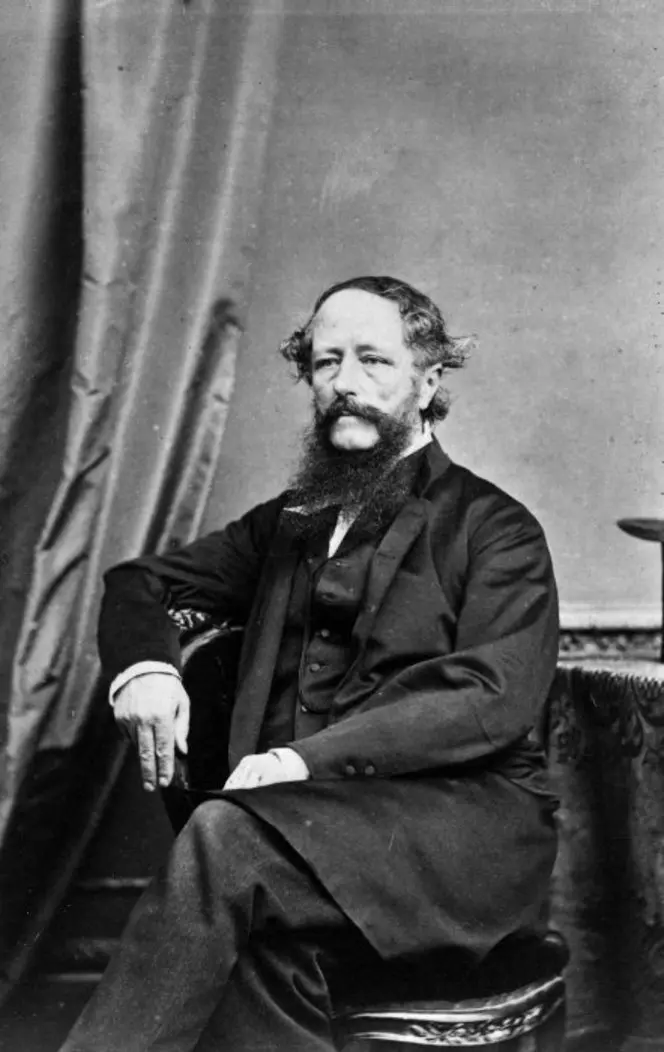
William Colenso taken in 1868. Ref: ½-005028
William Colenso had a rather colourful life. At first a respected printer, botanist, and, less comfortably, a missionary, he lost this respect with his inflexible and overbearing manner. He fell further into disrepute on moral grounds when he conducted an extra-marital affair with a member of his household. Colenso was eventually suspended from the diaconate of the Anglican Church in 1852. In 1858 he tried politics and in 1861 was elected to the General Assembly of New Zealand, representing Napier, but again a lack of tact and inability to compromise meant that he was not well received. By the end of his life, however, he was finally regarded with some tolerance owing to his lifetime achievements in botany and printing, and in 1894 was even reinstated as a deacon in the Anglican Church.
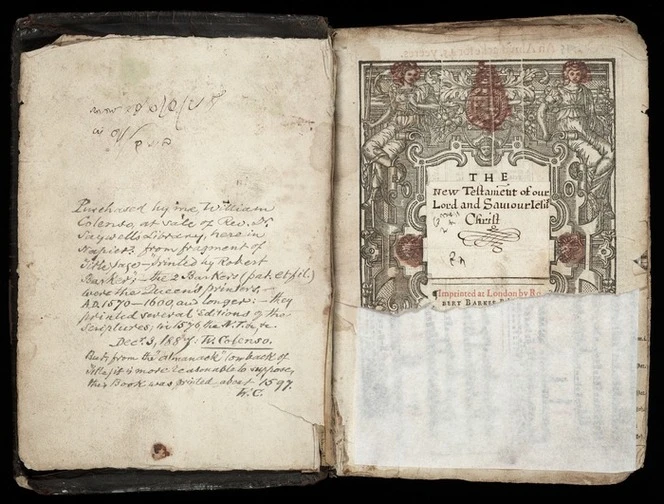
Well-worn Bible from William Colenso’s personal library. Ref: REng BIBLE 160-
Clearly much used, the above early 17th-century Bible, sat on the shelves of William Colenso’s private library. His note on the flyleaf (signed ‘W.C.’) shows his interest in its printing history. It probably came to this country with the Rev. Dr Lemuel Saywell (1828/29-1888), Vicar of St John the Evangelist in Napier, 1864-1867. Saywell arrived from Sutton, England in 1864 but financial difficulties led him to resign three years later in June 1867. When he returned to England with his family that same year, his household items including around 500 volumes from in his library were sold at auction. Among the notable books listed in the Hawkes Bay Herald, 8 October 1867 is '1 Bible, 240 years old, in fine preservation' and this is probably the bible obtained by Colenso. It was eventually presented to the Turnbull Library by Mrs. W.M. Simcox in 1973.
The small Bible below, designed to fit into a soldier’s pocket, is inscribed ‘A.T. Fawcett from Capt. Neville with every good wish, Aug. 29th 1915’.
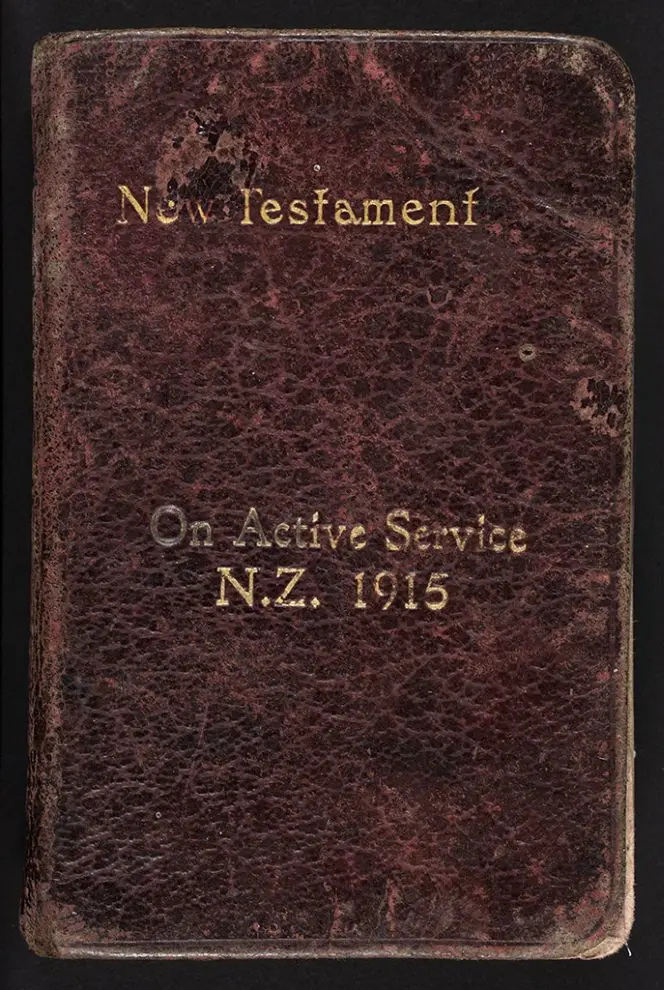
On active service. Ref: 511099.
During the First World War many thousands of these small Bibles were issued to service men and women. They included a message from Field Marshall Lord Roberts, dated 25 Aug 1914, which ends ‘You will find in this little Book guidance when you are in health, comfort when you are in sickness, and strength when you are in adversity’. The covers were stamped with the year the service man or woman entered active service.
Pencilled notes at the back of this Bible record that its owner rejoined his battalion immediately after the Gallipoli evacuation on 24th December 1915. Further notes record his subsequent movements from East Mudros to Lemnos and Alexandria, where he was put onto a train (probably to Moascar) with other Gallipoli evacuees at 7a.m. on the 30th December 1915.
An A.T. Fawcett is listed among the wounded in a New Zealand newspaper of July 1916, and an A.T. Fawcett of Nelson is listed as returning to New Zealand on the ‘Kia Ora’ in May 1919. This is probably Alan Thomas Fawcet of Tadmor, Nelson (spelt with one 't'), b.1894. His military service record shows that he signed up in April 1915 at the age of 20 years 10 months. He fought in Egypt, the Balkans and the Western Front, was wounded at Armentieres in July 1916, and was eventually discharged in New Zealand in June 1919. He died in Lower Hutt, New Zealand in 1989. So perhaps the Bible’s wartime owner was also the person who brought it back to this country. The Bible was deposited in the Turnbull Library on permanent loan by the Bible Society in New Zealand in 2011.
Teaser image: World War I New Zealand soldiers at the burial of Sapper J F Haynes, Romarin, France, May 1917. Ref: 1/2-012760-G
Thank you for your comment, Shane. It is always good to have some feedback. I had a lot of fun putting the exhibition together and it gives me much pleasure when other people enjoy it too.